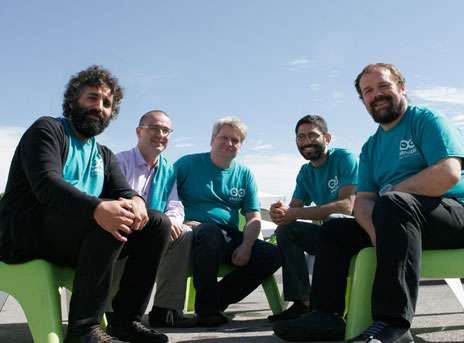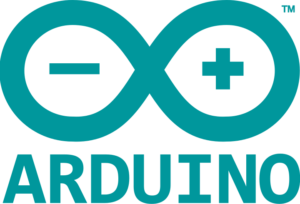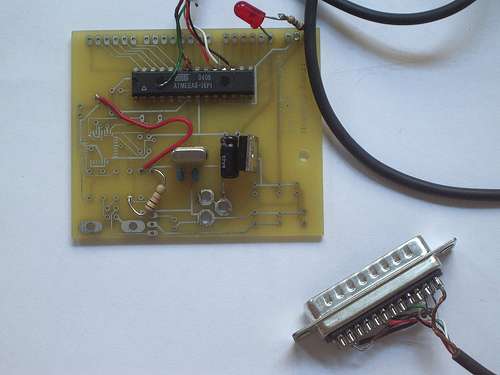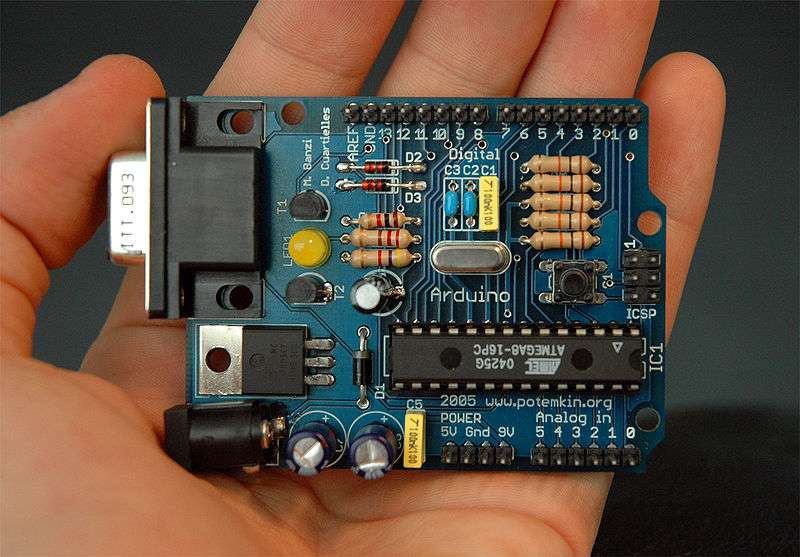What is Arduino
Arduino is an open-source electronics platform based on easy-to-use hardware and software. Arduino boards are able to read inputs – light on a sensor, a finger on a button, or a Twitter message – and turn it into an output – activating a motor, turning on an LED, publishing something online. You can tell your board what to do by sending a set of instructions to the microcontroller on the board.
History of Arduino
It was in the year 2005 that the first ever Arduino board was born in the classrooms of the Interactive Design Institute in Ivrea, Italy. Well, if you are not very familiar with the term, an Arduino is an Open Source microcontroller based development board that has opened the doors of electronics to a number of designers and creative engineers.
It was in the Interactive Design Institute that a hardware thesis was contributed for a wiring design by a Colombian student named Hernando Barragan. The title of the thesis was “Arduino–La rivoluzione dell’open hardware” (“Arduino – The Revolution of Open Hardware”). Yes, it sounded a little different from the usual thesis but none would have imagined that it would carve a niche in the field of electronics.
A team of five developers worked on this thesis and when the new wiring platform was complete, they worked to make it much lighter, less expensive, and available to the open source community.
About the Arduino
The new prototype board, the Arduino, created by Massimo Banzi and other founders, is a low cost microcontroller board that allows even a novice to do great things in electronics. An Arduino can be connected to all kind of lights, motors, sensors and other devices; easy-to-learn programming language can be used to program how the new creation behaves. Using the Arduino, you can build an interactive display or a mobile robot or anything that you can imagine.
You can purchase an Arduino board for just about US $30 or build your own board from scratch. Consequently, Arduino has become the most powerful open source hardware movement of its time.
David A. Mellis, the lead software developer of Arduino, states that this little board has made it possible for people to do things they wouldn’t have done otherwise.
Today, there are Arduino-based LED cubes, Twitter displays, DNA analysis kits, breathalyser and so much more. There are Arduino parties and Arduino clubs. As a feather to its crown, Google has recently released an Arduino-based development kit for its Android Smartphone!
Now, the Story in Detail…
As mentioned earlier, it all started in Ivrea, Italy.
To begin with, let’s have a look at how the name Arduino, that sounds quite strange for an electronic device, was chosen. This beautiful town of Ivrea, situated in Northern Italy, is quite famous for its underdog kings. In the year 1002 AD, King Arduin (you got it right!) ruled the country; two years later, he was dethroned by King Henry II of Germany. In memoir of this King Arduin, there is this ‘Bar Di Re Arduino’, a pub on the cobble stoned street in the town. Well, this place is where a new era in electronics had its roots!
This bar was frequently visited by Massimo Banzi, one of the founders of Arduino, who taught at Ivrea. He was the one who gave the name Arduino to this low-cost microcontroller board in honor of the place!
Before getting into how the Arduino was developed and used, let’s know who the core members of the Arduino developer team are: Massimo Banzi, David Cuartielles, Tom Igoe, Gianluca Martino, and David Mellis.

Photo Courtesy – Randi Klett/IEEE Spectrum
Arduino was an answer to how to teach students to create electronics fast…
It was in the year 2002 that Banzi, a software architect by profession, was recruited as an associate professor by IDII in order to promote novel ways of doing interactive design, in other words, physical computing. Though he had some good ideas, limited class time and shrinking budget didn’t help him much. Like most of his colleagues, Banzi had to rely on the BASIC Stamp, a microcontroller developed by Parallax, a California based company. Engineers had been making use of this microcontroller for about a decade. The Stamp was coded using the BASIC programming language and looked like a tidy little circuit board packed with essentials of a power supply, memory, a microcontroller, and input/output ports to which hardware can be attached. However, the BASIC Stamp had two issues according to Banzi. One, it did not have sufficient computing power for some of the projects his students had conceptualized and two, it was pretty expensive. In fact, a board with its basic parts cost about US $100. Moreover, Banzi also required something that could run on Macintosh computers which were largely used by designers at IDII. The new Arduino microcontroller that best suited their needs had signs of its roots at this point of time.
Meanwhile a designer-friendly programming language called “Processing” had been developed by Banzi’s colleague from MIT. Processing was quickly gaining popularity as it enabled even amateur programmers to create complex and beautiful data visualizations! It was an extremely easy-to-use Integrated Development Environment or IDE. Banzi really liked this concept and wondered if he and his team could create similar software programs to code a microcontroller instead of graphics on a screen.
Contribution of Hernando Barragan
One of Banzi’s students, Hernando Barragan, took the first baby step in the direction towards creating software tools similar to Processing. He developed a new prototyping platform known as Wiring; it included both a user-friendly IDE as well as a ready-to-use circuit board. It turned out to be a promising project the success of which continues till date; however, Banzi was already having bigger dreams. He wished to make a platform that was even cheaper, simpler and easier to use.
The First Prototype Board
Well, Banzi succeeded in creating the first prototype board in the year 2005; it was a simple design and at that time, it wasn’t called Arduino. Of course, by now, you would know how he had coined the name later that year.
Open Source Model – A Big Decision
Banzi and his collaborators strongly believed in open-source software. As the purpose was to develop a quick and easily accessible platform, they thought it would be better to open up the project to as many people as possible instead of keeping it closed. Another crucial factor that contributed to that big decision was that after operating for nearly five years, IDII had no more funds left and was in fact going to shut its doors. All the faculty members feared that their projects might not survive or would be embezzled. It was at this crucial point of time that Banzi decided to go ahead and make it open source!
How Banzi and team managed to create Arduino and make it available for public
Pretty obviously, the open source model had always been used to fuel innovation for software and never hardware. If they had to make it work, they had to find a suitable licensing solution that could apply to the board. After a little investigation, Banzi and team looked at the whole thing from a different angle and decided to use a license from Creative Commons, a nonprofit group whose agreements were normally used for cultural works like writing and music. According to Banzi, hardware is a piece of culture that must be shared with other people!
Well, the next step was to make the board. The group decided to fix a specific, student-friendly price of $30 as their goal. Banzi felt that the Arduino should be affordable for all students. However, they also wanted to make it really quirky, something that would stand out and look cool as well. While other boards were green, they wanted to make theirs blue. While a few manufacturers saved on input and output pins, they added a lot to their board. Quite weirdly, they added a little map of Italy on the back of the Arduino board!
Gianluca Martino, one of the ‘real’ engineers on the team felt that the nontraditional and raw approach to circuit board design was pretty enlightening. He thought that the product created was a result of a new way of thinking about electronics; not in an engineering way wherein you have to count electrodes, but using a DIY approach.
The product created by the team comprised of inexpensive parts that could be found easily if users wanted to create their own boards. However, an important decision was to ascertain that it would essentially be plug and play: something someone could just take out of a box, plug into a system and use it right away. On the other hand, boards such as the BASIC Stamp demanded the users to shell out a lot of other items that ultimately added to the total cost. However, for the Arduino, a user needs to just pull out a USB cable from the board and merely connect it to a computer to program the device.
A telecommunications engineer of the team, David Cuartielles laurels the philosophy of Arduino stating that if one wants to learn electronics, he or she must be able to learn from day one rather than starting with Algebra and Arduino is ideal to learn electronics from day one.
Tom Igoe, a professor of physical computing at the New York University was very much impressed with the affordability and extraordinary concept of the Arduino and he is now a core member of the Arduino team.
Philosophy in Action….
The team soon decided to put that philosophy to test. They gave 300 blank printed circuit boards to students of IDII with a simple directive: Look up the assembly instructions available online, build your own board and use it to create something. Many projects came up and one was a homemade alarm clock that hung from the ceiling by a cable. The clock would rise tauntingly higher into the air until you just had to get up whenever you hit the snooze button!
Very soon, many people came to know of the boards and they wanted one as well. It was Banzi’s friend who ordered one unit and became the first customer. The project started to take off and one major aspect was missing – a name for the invention! And, one night, over drinks at the local bar, it struck Banzi: Arduino, just like the bar – and the king…..
As you could easily figure it out, word of Arduino rapidly spread online – with no marketing or advertising, taking the DIY world by storm!!



I like the article
Thanks, it is very informative
Thanks for the great post